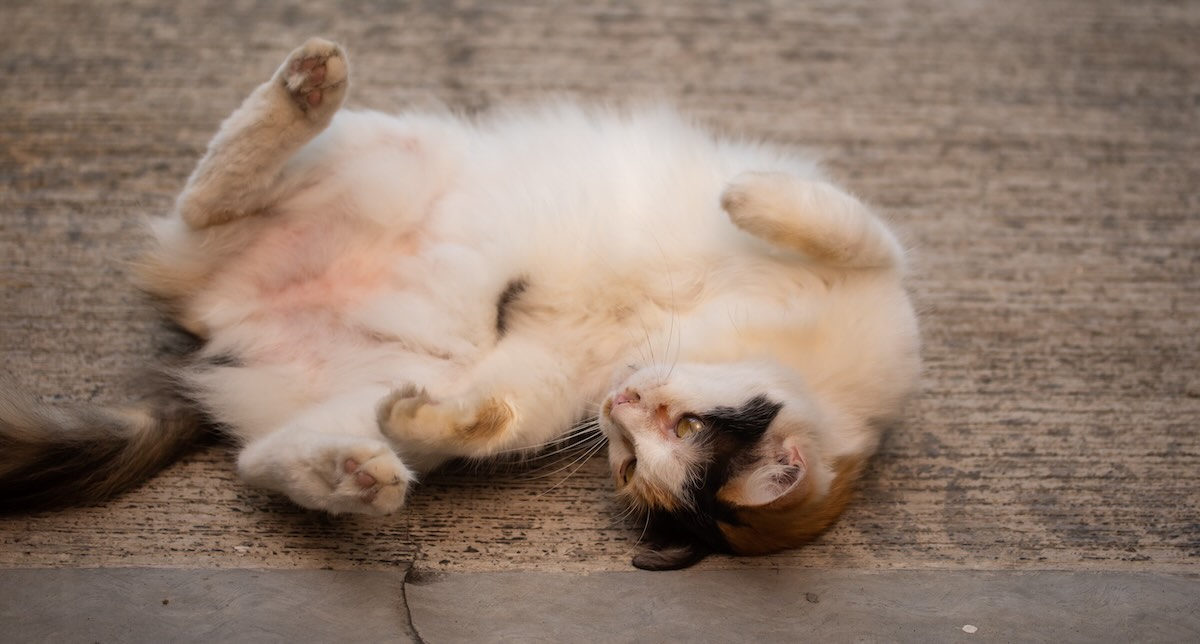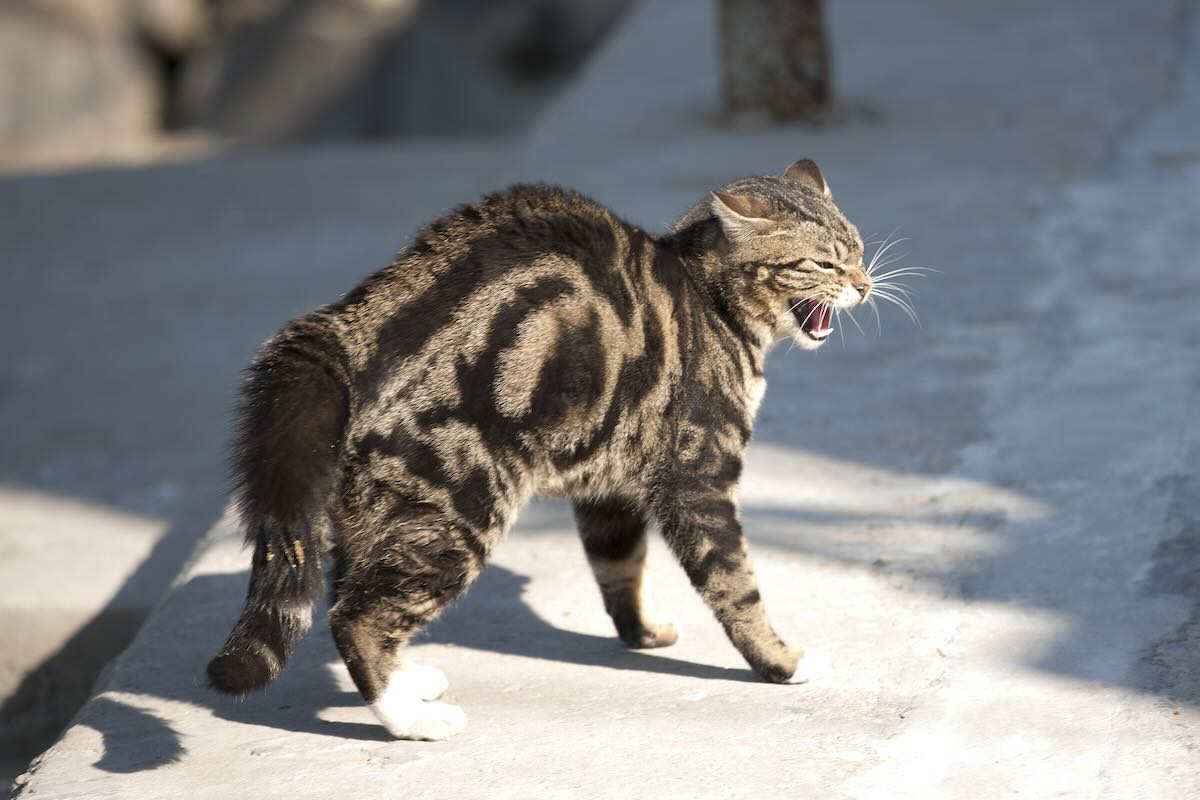Keep Your Pets Safe and Content This Easter: A Sydney Pet Owner’s Guide
Easter celebrations bring joy to Sydney households, but they can present un...
March 17, 2025
A friendly notice that we will have a price increase from the 1st July 2021. Please be sure to get in touch with our team if you have any questions.
October 10, 2024
Cats are well-known for their complex and delicate communication styles. Having run a cattery for many years, we know that interpreting your feline companion’s body language can substantially improve your bond and allow you to better attend to their needs. We’ll help you comprehend the different messages your cat may be conveying through their posture, tail, ears, eyes, and vocalisations.
Understanding your cat’s body language requires considering every aspect of a scenario. A single gesture can have multiple meanings depending on the situation. For example, a lifted tail normally signifies a cordial greeting, but when combined with other indicators, it can imply anxiety or fear.
When your cat feels happy and comfortable, you might observe their tail held high with a slight curve at the tip, reflecting confidence and contentment. Their ears will be forward and slightly to the side, indicating relaxation and curiosity. Slow blinking, often referred to as “cat kisses,” shows trust and affection, while a relaxed, loose body posture signifies comfort. Gentle purring is another common sign of contentment, though it’s essential to consider the context, as cats might also purr when they’re stressed or in pain. Additionally, kneading with their paws is a behaviour rooted in kittenhood that indicates safety and security.

A cat seeking interaction or showing affection may display a tail straight up with a slight hook at the end, resembling a question mark, often indicating friendliness and approachability. They might rub against you or objects, marking their territory with scent while bonding with you. Gentle head-butting, also known as “bunting,” is a sign of trust and affection, and purring combined with other friendly behaviours signals happiness. Presenting their belly can indicate trust, though it isn’t always an invitation for belly rubs, as some cats may become defensive if their belly is touched.
When something catches your cat’s attention, their ears will swivel and point forward, showing they are alert and trying to catch sounds from the environment. Their whiskers will be pointed forward, indicating curiosity and interest in something specific. Eyes wide open with normal-sized pupils demonstrate focus without alarm, and a tail held horizontally or slightly raised reflects a curious and relaxed state.
There are several signs that your cat is feeling stressed or scared. Crouching low to the ground is a posture that indicates the cat is trying to make itself smaller and appear less threatening. Their ears will be flattened against the head, suggesting fear or a sense of being threatened. Dilated pupils are a common sign of fear or anxiety, especially when combined with flattened ears and a crouched posture. A tail tucked or held close to the body signifies fear and a desire to retreat or hide. Cats often hide or seek high places when they’re anxious to feel safe and observe their surroundings from a secure vantage point. Excessive grooming or overgrooming can be a coping mechanism for stress and anxiety.

If your cat is becoming irritated, you might notice their tail swishing back and forth, a sign of annoyance or frustration. Their ears will turn sideways or back, indicating they are on edge and may not welcome interaction. Narrowed pupils can also suggest annoyance or aggression, often paired with a tense body posture. Low growling or hissing are vocalisations that clearly signal annoyance or feeling threatened, and skin twitching, especially along the back, can be a sign of agitation or overstimulation.
When cats feel threatened and may become aggressive, they often exhibit an arched back with fur standing on end, making them appear larger and more intimidating. Their tail will be puffed up, indicating fear or readiness to defend themselves, and their ears flattened against the head to protect their ears in a fight. Dilated pupils suggest heightened alertness, preparing for a possible confrontation. Vocal warnings, such as hissing, growling, or yowling, signify that the cat feels threatened and may attack if provoked. Additionally, a direct, intense stare is a challenge or warning to back off.
A cat in a playful mood might exhibit ears pointed forward, showing they are engaged and interested in play. Their tail will be straight up or gently swishing, indicating excitement and readiness to pounce or chase. A crouching posture, preparing to pounce, shows they are ready to engage in play, while dilated pupils indicate excitement and anticipation. Playful vocalisations, such as chirps or trills, are also common when cats are in a playful mood.
While cats often try to hide illness, some signs that your cat might be in pain include a hunched posture, indicating discomfort or pain, especially if the cat is reluctant to move. Squinted eyes can also be a sign of pain or discomfort, often accompanied by a lack of appetite. Ears held flat or to the side can indicate discomfort or feeling unwell, and changes in vocalisation, either more or less than usual, can signal that something is wrong. Changes in eating or litter box habits, such as reduced appetite or altered litter box usage, can also indicate health issues that should be addressed by a veterinarian.
Once you’ve learnt to interpret your cat’s body language, it’s important to respect what they’re communicating. If your cat shows signs of discomfort or stress, give them space and avoid forcing interactions. Conversely, when your cat displays friendly body language, reciprocate with gentle attention and affection.
Observing Your Cat’s Behaviour: Spend time watching your cat in various situations to gain a better understanding of their unique body language. Note how they react to different stimuli and interactions.
Learning from Multiple Cats: If you have more than one cat, observe the differences and similarities in their body language. Each cat is an individual, and their communication methods can vary.
Consulting Resources: There are many books, websites, and videos dedicated to understanding cat behaviour. Use these resources to deepen your knowledge and improve your ability to interpret your cat’s signals.
Seeking Professional Help: If you’re struggling to understand your cat’s behaviour or if they exhibit persistent signs of stress, consider consulting a veterinarian or a cat behaviourist for professional advice.
Understanding your cat’s body language takes time and practice, but it’s a valuable skill that can greatly improve your relationship with your feline companion. By paying attention to these subtle cues, you’ll be better equipped to meet your cat’s needs and ensure their happiness and well-being.
Why does my cat’s tail puff up?
A puffed-up tail often indicates fear or aggression. Your cat is trying to appear larger and more intimidating to potential threats.
What does it mean when my cat slow blinks at me?
Slow blinking, or “cat kisses,” is a sign of trust and affection. Your cat is showing that they feel safe and comfortable around you.
Why does my cat swish their tail back and forth?
Tail swishing can signal frustration or impending aggression. It’s a sign that your cat is annoyed or focused on something.
How can I tell if my cat is stressed?
Signs of stress in cats include excessive grooming, hiding more than usual, changes in eating or litter box habits, and increased vocalisation. Monitor your cat’s behaviour for these indicators.
What should I do if my cat hisses or growls?
Hissing or growling are clear signs that your cat feels threatened. Give them space and avoid forcing interactions until they feel more comfortable.
How can I improve my understanding of my cat’s body language?
Spend time observing your cat, learn from multiple cats, consult resources, and seek professional help if needed. Practice and patience are key to understanding your cat’s communication.
By taking the time to understand and respect your cat’s body language, you can build a stronger, more trusting relationship with your feline friend. Remember, every cat is unique, and learning to interpret their signals will help you provide the best care possible.
Easter celebrations bring joy to Sydney households, but they can present un...
March 17, 2025
Love is in the air, and who deserves our affection more than our loyal anim...
February 12, 2025
With Australia Day just around the corner, it’s time to fire up the barbi...
January 21, 2025